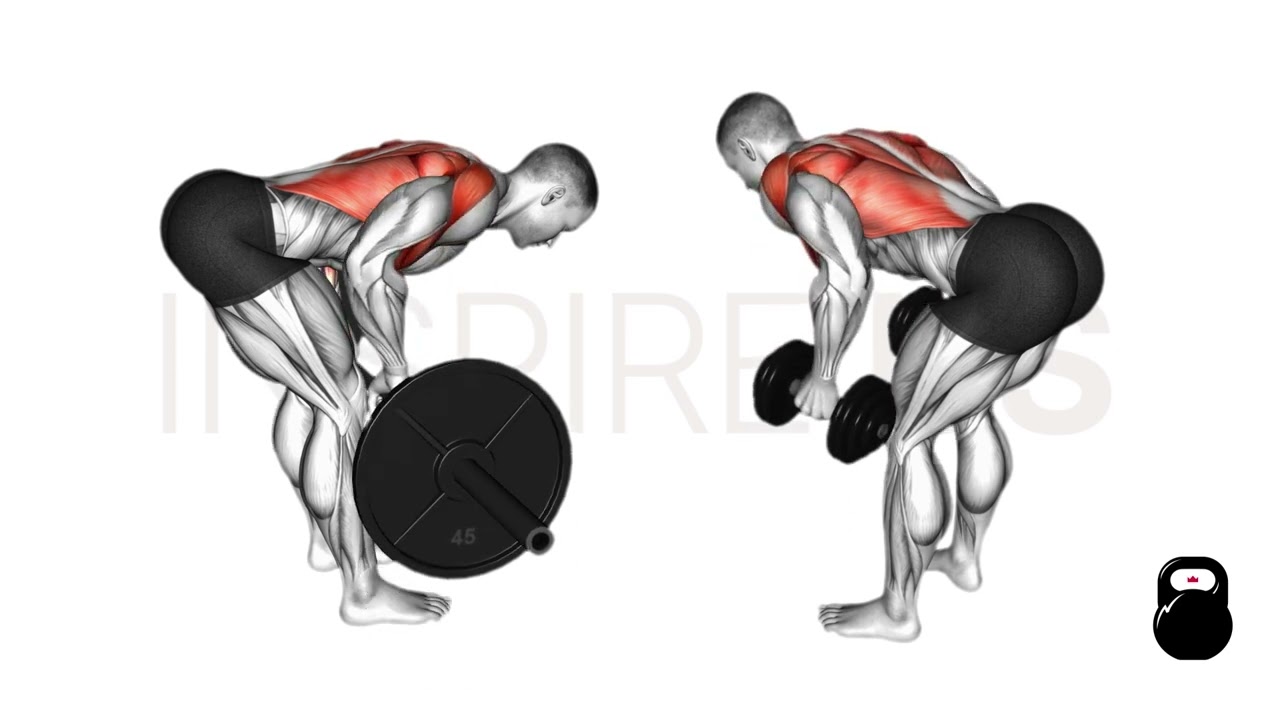Barbell Row vs Dumbbell Row: Differences Explained
The bent-over row is well established as an essential exercise in any back muscle workout plan, with a compound recruitment pattern that spans the entirety of the back and parts of the arms.
However, due to its popularity, lifters may often find themselves confused as to the difference between two of the most popular forms of the bent-over row; the barbell row and the dumbbell row.
While it may appear as if equipment usage is the sole difference between the two row variations, there are in fact quite a number of technical differences that make each type of row distinct from the other - as well as gear them towards certain purposes better.
What are the Barbell and Dumbbell Row Exercises?
Both barbell and dumbbell row variations are multi-joint free weight compound exercises performed for the purposes of training the back and biceps muscles - often with a significant amount of resistance and a moderate amount of volume, though it will depend on their role in the training program.
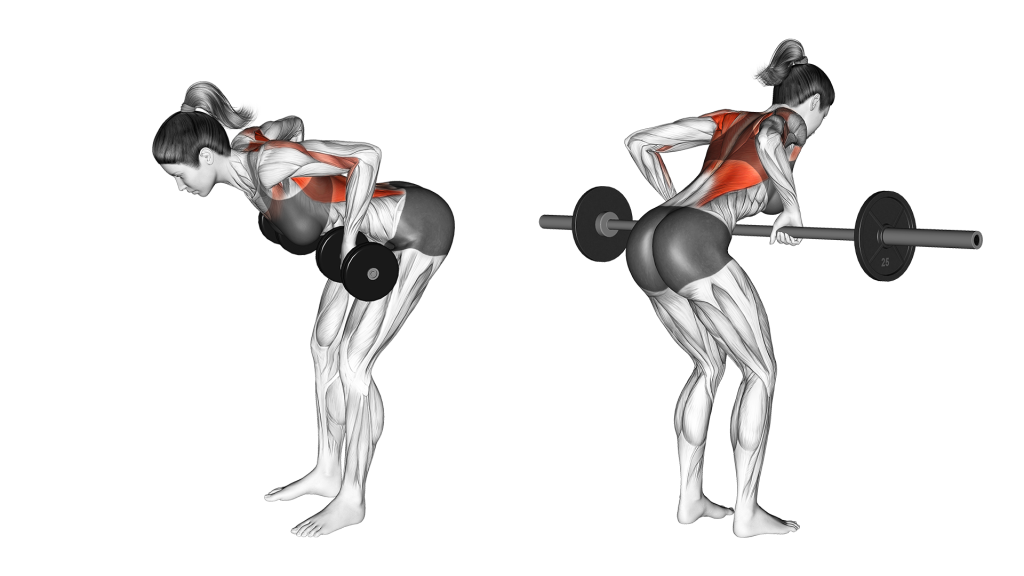
The barbell and dumbbell row both feature mechanics like elbow flexion and scapular retraction, but differ in terms of whether said mechanics are performed in a unilateral or bilateral manner.
Dumbbell rows will generally be performed in a unilateral (one-sided) fashion, whereas barbell rows are bilateral (both sides of the body).
Muscles Worked by Rows
Both dumbbell and barbell rows will train the muscles of the latissimus dorsi, trapezius, rhomboids, teres major, erector spinae, posterior deltoid head and the biceps brachii.
In terms of muscular emphasis, however, dumbbell and barbell rows will differ due to the difference in forearm orientation and the angle of the torso relative to the weight being lifted.
Equipment Needed to Row
As is clued in by their names, barbell rows require a barbell and set of weight plates, whereas dumbbells will require a single dumbbell.
How-to: Barbell Row
To perform a repetition of the barbell row, the lifter will bend at the hips and knees as they hold a barbell with both hands in an overhand grip.
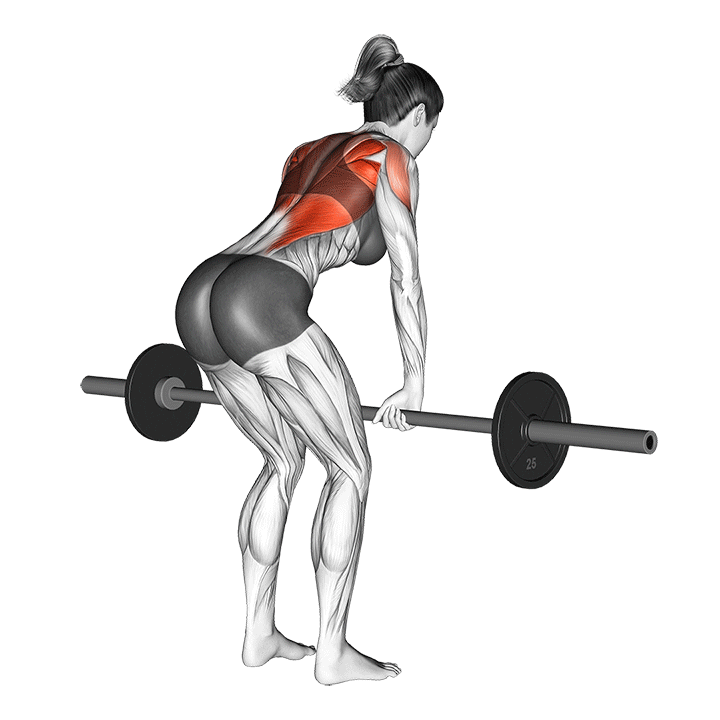
Then, contracting the muscles of the back and ensuring the spine is in a protected state, the lifter will draw the barbell towards their sternum, pulling the elbows behind the torso as they do so.
Once the barbell comes within several inches of touching the torso, the lifter will simply reverse the motion and slowly extend their arms beneath them - thereby completing the repetition.
How-to: Dumbbell Row
To perform a repetition of the dumbbell row, the lifter will bend at the hips until the torso is parallel with the floor - placing one hand atop a bench or similarly stable object for support. A dumbbell should be gripped in the opposite hand with the forearm oriented in a neutral position.
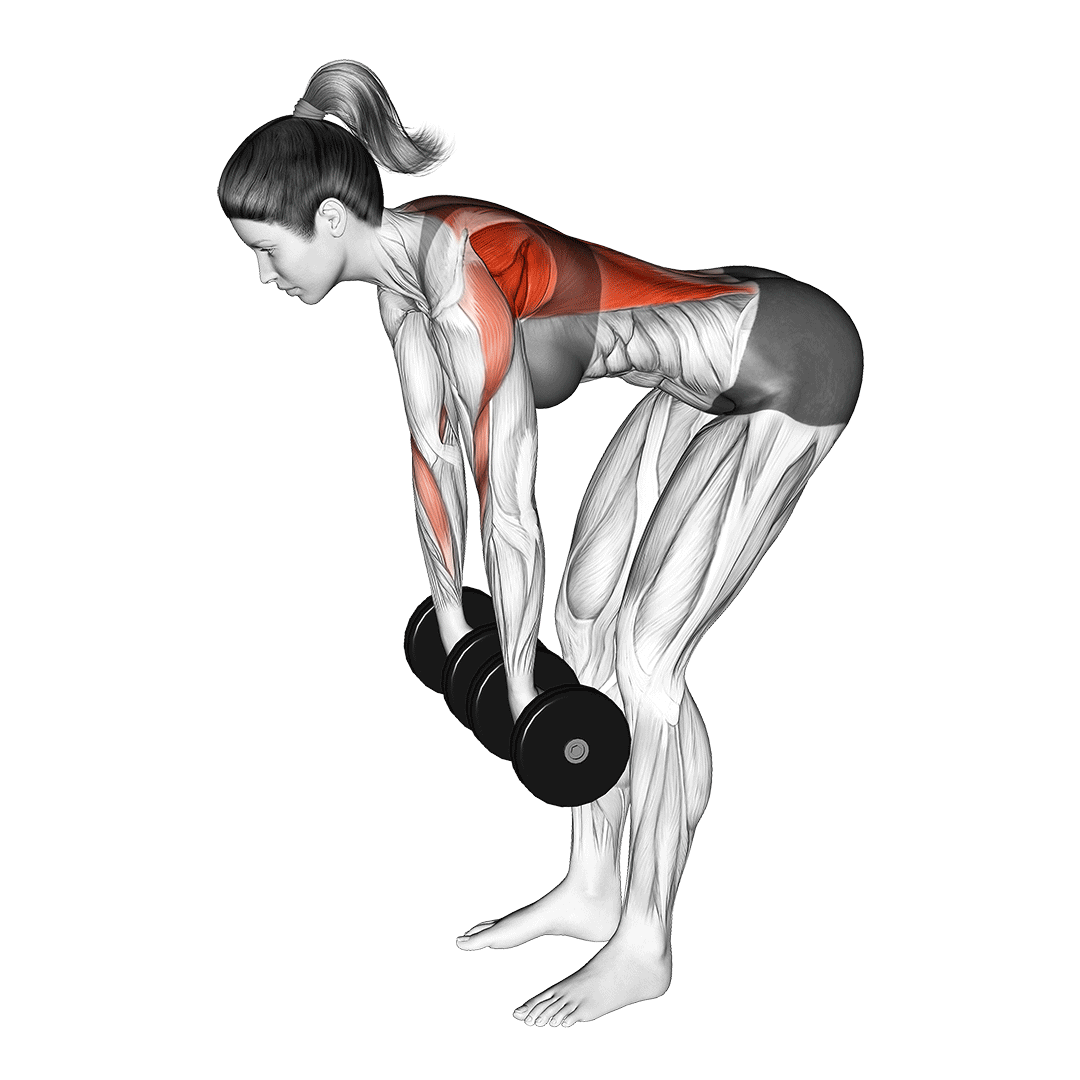
Then, ensuring the core is contracted and the lower back at a neutral curve, the lifter will draw their elbow behind their torso, pulling the dumbbell towards the sides of the waist as they do so.
From this point, the lifter will then slowly reverse the motion and lower the dumbbell back to its original position beneath their torso - thereby completing the repetition.
Grip Variability and Forearm Orientation
Due to the difference in size and shape of barbells and dumbbells, lifters will primarily perform the barbell row or dumbbell row with different forearm orientations.
Barbell Row - Overhand Grip
Because of the length and weight of a barbell, the barbell row is performed with a pronated (overhand) grip, meaning that greater emphasis on the upper section of the back and the erector spinae will be needed.
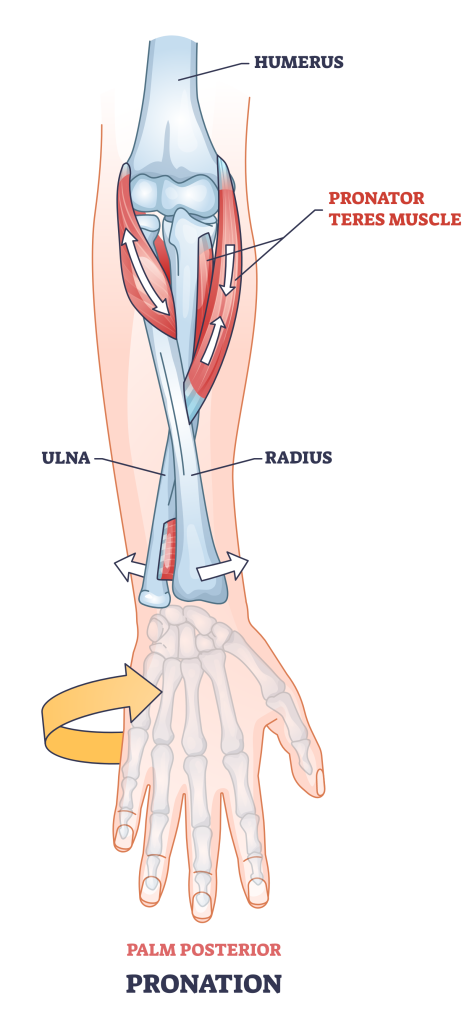
In addition, this overhand grip will mean that the barbell may be pulled towards a higher part of the body - generally around the sternum or chest, thereby increasing range of motion.
Dumbbell Row - Neutral Grip
Conversely, the dumbbell row will traditionally use a neutral (palms facing each other) grip, and as such will place greater emphasis on the lower portion of the trapezius, as well as the posterior deltoid head - but will also effectively reduce the range of motion due to the dumbbell needing to be pulled towards the waist, rather than higher up on the torso.
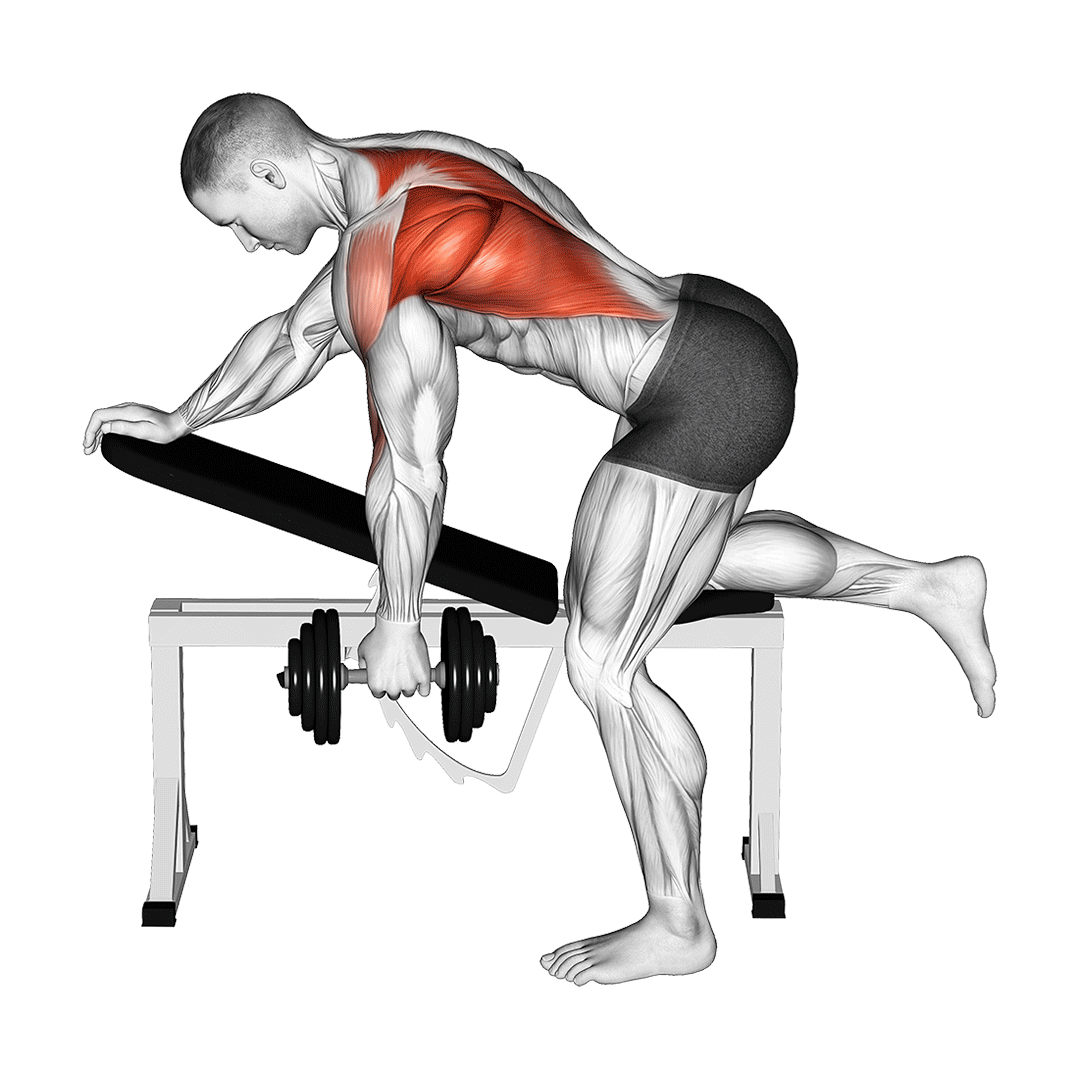
Furthermore, the neutral grip used in dumbbell rows can allow for a somewhat safer and more advantageous exercise to be performed in regards to scapular movement and the entire arm as a whole.
Unilateral vs Bilateral Contraction
The terms “unilateral” and “bilateral” refer to whether a movement involves locomotion in one or both sides of the body, respectively.
This can affect whether a given exercise recruits certain stabilizer muscles, the amount of exertion that can be consciously distributed by the lifter and even how much weight can be lifted - as both sides of the body working in tandem can lift more than each side individually.
Traditionally, the dumbbell row is a unilateral movement due to dumbbells being small enough to hold with only one hand - whereas barbell rows are unilateral, both because of the barbell’s length and because it allows for greater weight to be moved.
The Importance of Unilateral and Bilateral Contraction in Row Exercises
Though it may seem as if working one or both sides of the body is of little importance in training, it is particularly important for rowing exercises due to the various purposes involved.
Lifters training for strength (and possess no muscular imbalances) should perform the barbell row, as it will allow for greater weight to be loaded and therefore training stimulus that is more geared towards strength development.
Conversely, lifters who wish to overcome muscular imbalances or distribute more energy towards training one side of the body at a time (such as for a longer time under tension) may wish to use dumbbell rows instead.
Angle of Resistance and Muscular Emphasis
All muscles are recruited within a specific range of motion - that is to say, depending on the position of the weight relative to the body and what part of the body is moving, different muscles will be worked more intensely.
While both the barbell and dumbbell row train practically the same muscles, the fact that the dumbbell row is primarily unilateral and does not use a pronated grip means that it will emphasize different muscles than the barbell row would.
Furthermore, this also equates to certain stabilizer muscles playing a bigger role than others - especially if the lifter is using their opposite arm to support their torso, as is common with the dumbbell row.
It is true that both exercises are perfect for training the entirety of the back and parts of the arms - but lifters wishing to further specify the focus of their workouts may wish to switch to the row variation that better meets their needs.
Barbell Row Muscular Emphasis
Barbell rows will often involve the torso being unsupported despite being bent parallel to the floor. This equates to greater isometric contraction of the erector spinae and the muscles of the core, as they will need to work harder to maintain a neutral back.
Furthermore, the angle of resistance, wider range of motion and pronated grip seen in a barbell row equate to greater recruitment of the upper section of the trapezius muscles.
Dumbbell Row Muscular Emphasis
Conventional dumbbell rows allow the lifter to hold a dumbbell in a neutral grip, meaning that greater recruitment of muscles like the brachialis, posterior deltoid head and the lower section of the trapezius will take place.
Even in cases where the dumbbell is rowed with an overhand grip, the lifter will still place greater emphasis on their lower trapezius due to the greater distance in which the elbow may be drawn behind the torso (as the dumbbell is pulled towards the waist).
Range of Motion and Time Under Tension
Range of motion and the length of time in which the muscles are under tension go hand-in-hand, as a short range of motion will usually involve a shorter time under tension as well.
This is vitally important for muscular hypertrophy and the development of isometric strength, as less time under tension will equate to less muscular development as a whole.
Comparing Range of Motion Between Barbell and Dumbbell Rows
When comparing the range of motion of both the barbell and dumbbell row, it can be said that the barbell row features a somewhat larger range of motion due to the length of the barbell and the intended touch point of the exercise.
Barbell rows feature a larger range of motion of the shoulder blades due to the length of the barbell, allowing lifters to place the muscles of their back in a longer time under tension and therefore likely resulting in greater training response.
This isn’t to say that the dumbbell row is entirely ineffective or has a short range of motion, however. Ultimately, the difference in ROM is only several inches, and should only be considered a minor factor when deciding between the two back row variations.
Frequently Asked Questions (FAQ)
Can Dumbbell Rows Replace Barbell Rows?
Yes - for most intents and purposes, the dumbbell row can act as a replacement exercise to the barbell row.
This is especially true for lifters with a muscular imbalance or those who find the barbell row to be taxing on their scapula or lower back, as the dumbbell row is considerably easier on both parts of the body.
Of course, it is important to seek out professional advice before addressing any present physiological issues yourself.
Which Row is Best for Strength?
Ideally, the row that is best for strength is one that will allow you to lift as much weight as possible in a safe manner.
For most individuals, this is the barbell row or one of its close variations. Lifters wishing to build even more back strength may be interested in the deadlift as well.
Are Rows Enough for the Back?
Rows will target nearly all muscles present in the back - but may not be enough.
Using rows as the sole back exercise in your training program is poor programming, and better results can be found by also including vertical pulling exercises alongside accessory movements like the barbell shrug, bicep curl and the dumbbell pullover.
The Verdict - Which Row Should You Do?
If you are a strength-focused lifter with no physiological problems, then the barbell row is the right exercise for you.
However, if your goals are less focused on strength or you wish to perform a one-sided exercise for any reason, then the dumbbell row is better.
Keep in mind that both exercises are only as effective as you allow them to be. Ensure that your technique is correct, and that either row variation is further supported by accessory exercises that address their weak points.
References
1. Graham, John F. BS, CSCS, D*. Dumbbell One-Arm Row. Strength and Conditioning Journal 23(2):p 59, April 2001.
2. Saeterbakken, A., Andersen, V., Brudeseth, A., Lund, H., & Fimland, M. S. (2015). The Effect of Performing Bi- and Unilateral Row Exercises on Core Muscle Activation. International journal of sports medicine, 36(11), 900–905.
3. Fenwick, Chad M J et al. “Comparison of different rowing exercises: trunk muscle activation and lumbar spine motion, load, and stiffness.” Journal of strength and conditioning research vol. 23,2 (2009): 350-8. doi:10.1519/JSC.0b013e3181942019

